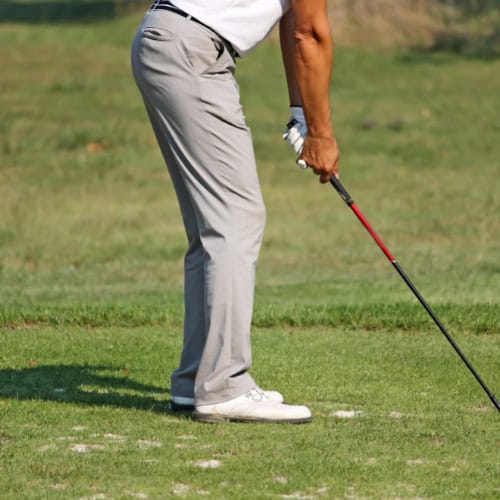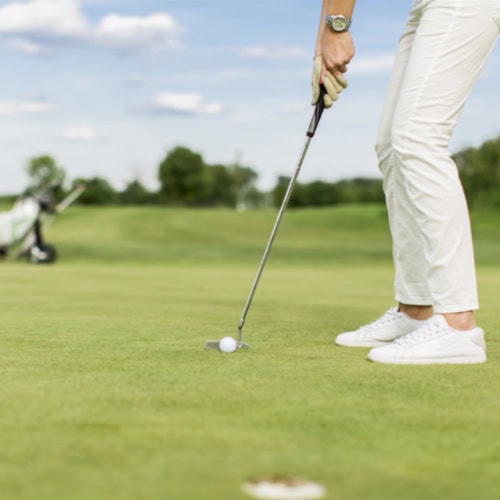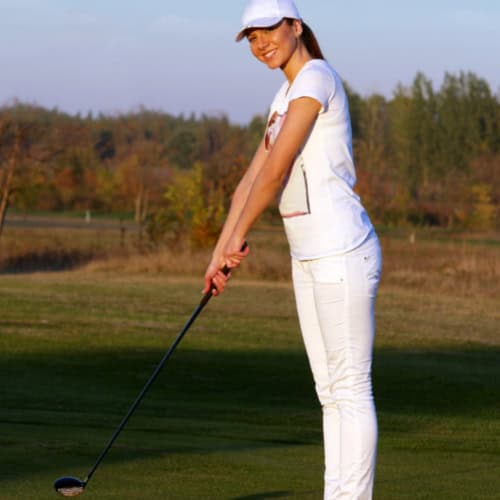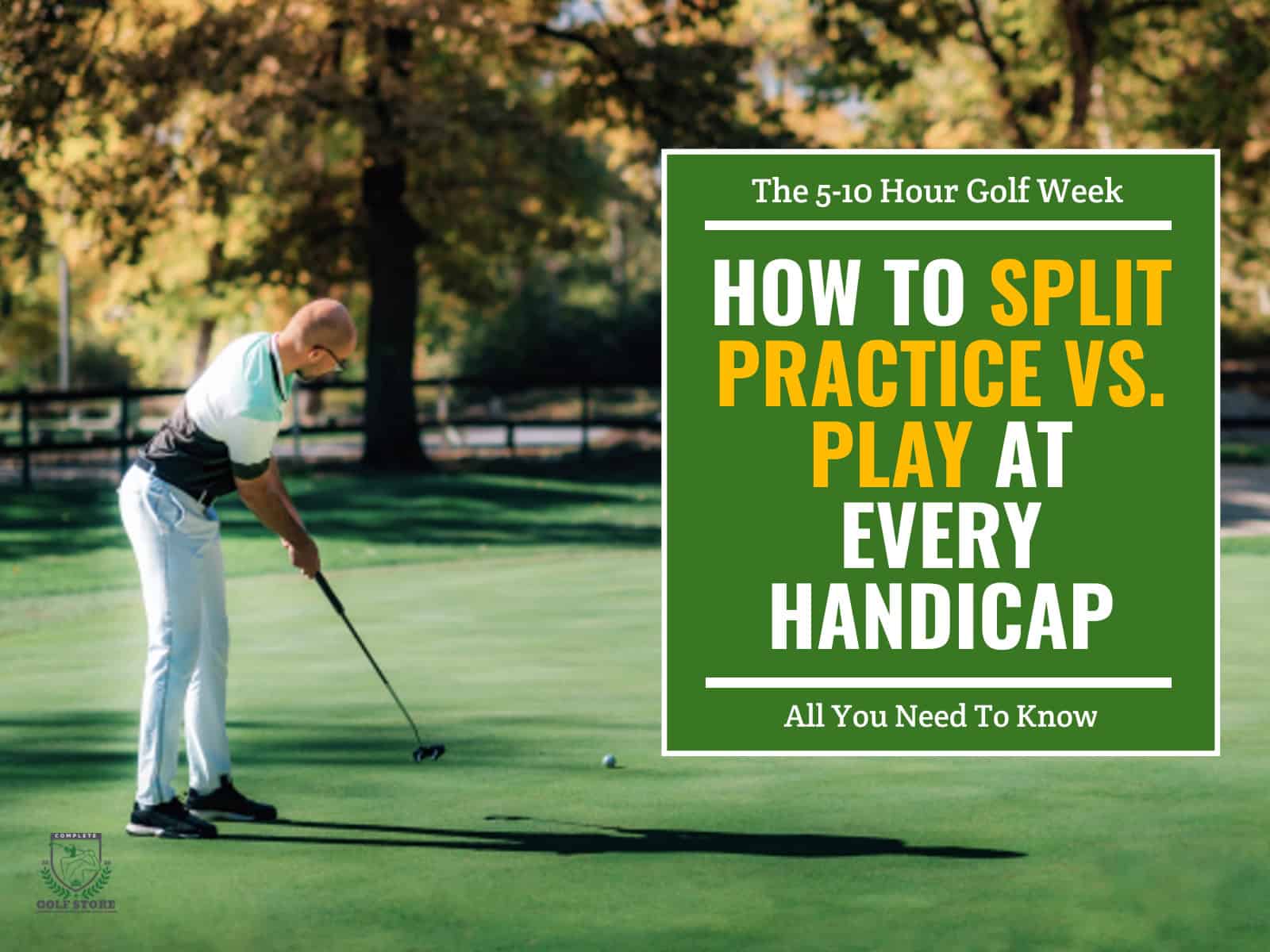Grip it and rip it! The connection between you and your golf club is crucial, and choosing the right grip can make all the difference in your game. A well-fitted grip enhances comfort and confidence and optimizes your performance on the course.
In this article, we’ll explore the key factors to consider when selecting golf grips, from understanding size and fit to navigating materials and textures. We’ll also discuss grip maintenance and highlight special features that can improve your game.
Understanding Grip Size and Fit
Selecting the correct grip size is essential for maintaining proper hand control and achieving the desired club release. Using a grip that is too small can cause your hands to work harder, leading to tension and fatigue, while a grip that is too large can reduce your ability to control the club face, resulting in inconsistent shots.

Standard Grip Sizes
Golf grips come in a range of sizes to accommodate different hand sizes and preferences:
- Junior – Designed for younger players with smaller hands
- Undersized – Suitable for players with hands measuring less than 7 inches from the wrist crease to the tip of the middle finger
- Standard – Fits the majority of golfers with hands measuring between 7 and 8.75 inches
- Midsize – Ideal for players with hands measuring between 8.25 and 9.25 inches
- Jumbo – Best for golfers with hands measuring over 9.25 inches or those who prefer a thicker grip
For older players, golf grips size for seniors may require special consideration to accommodate changes in hand strength and dexterity.
To determine your ideal grip size, measure the distance from the wrist crease to the tip of your middle finger. This measurement will help you select the appropriate size category.
Customizing Grip Size
While standard sizes fit most golfers, customizing your grip size is possible to achieve the perfect fit. One common method is adding extra tape wraps underneath the grip before installation. This allows you to fine-tune the thickness to your preference without moving up to the next size category.
Another customization option is grip stretching, which involves slightly enlarging the grip during installation. This technique is often used by players who find themselves between two standard sizes.
Advanced players may also benefit from mixing and matching grip sizes throughout their set. For example, using a slightly thicker grip on the driver for added control or a thinner grip on wedges for enhanced feel.
When customizing your grip size, it’s essential to work with a professional club fitter or experienced club builder to ensure the modifications are done correctly and consistently across your set.
Exploring Grip Materials and Textures

Golf grips come in a variety of materials, each offering distinct advantages in terms of feel, traction and durability. Understanding the characteristics of different grip materials can help you select the best option for your playing style and preferences.
Common Grip Materials
The three most common golf grip materials are rubber, cord and synthetic materials:
Rubber Grips
Rubber grips, such as the popular Golf Pride Tour Velvet, are known for their tackiness, firmness and durability. They provide a comfortable and secure feel for a wide range of golfers. Rubber grips are an excellent choice for players who prioritize a classic feel and reliable performance.
Rubber grips offer excellent traction in dry conditions, are durable and long-lasting and provide a firm, responsive feel.
Cord Grips
Cord grips are constructed by combining rubber and cord material, resulting in a unique texture that offers increased traction in all weather conditions. These grips are particularly beneficial for players who frequently play in wet or humid environments, as well as those with high swing speeds who require maximum control.
Some popular cord grip options include Golf Pride’s New Decade MultiCompound, Lamkin’s Crossline Cord and the Winn Dri-Tac Cord grips.
Some benefits of cord grips include enhanced feedback and responsiveness, superior traction in wet conditions and suitability for players with high swing speeds.
Synthetic Grips
Synthetic grips are designed to provide excellent durability and shock absorption. These are often preferred by golfers who seek a softer feel and reduced vibration at impact. Some excellent synthetic grips include the SuperStroke Cross Comfort, Winn Dri-Tac and Lamkin Sonar +.
Synthetic grips offer several advantages, such as soft, comfortable feel, reduced vibration and shock at impact and excellent durability and wear resistance.
Impact of Grip Material on Performance
Grip material affects traction, comfort and confidence, as well as the overall weight and balance of the club.
Firmer grips, such as cord or firm rubber, provide better torsion control and are often preferred by professional golfers and players with high swing speeds. These grips allow for more precise control of the clubface and can help minimize unwanted twisting during the swing.
Softer grips, like those made from synthetic materials, prioritize comfort and shock absorption. They can be a good choice for players with slower swing speeds or those who struggle with hand or wrist discomfort.
Ultimately, the best way to determine which grip material works best for your game is to test different options. Experiment with various textures and materials to find the combination that provides the optimal balance of comfort, control and confidence for your unique swing and playing style.
Special Features and Preferences

When selecting golf grips, it’s important to consider not only the basic factors like size and material but also the special features and personal preferences that can enhance your comfort and performance on the course.
Visual Aids and Alignment
Some grips come with built-in visual aids and alignment features that can help you achieve a more consistent and accurate grip position. These features are particularly useful for golfers who struggle with hand placement or tend to grip the club too strongly or weakly.
Examples of grips with visual aids and alignment features include:
- Lamkin Calibrate: Features a subtle ridge along the back of the grip to guide hand placement and promote a more neutral grip position.
- Golf Pride Align: Uses a dedicated raised ridge on the back of the grip to help maintain consistent hand placement and clubface alignment.
When using grips with alignment aids, it’s important to have them installed in the correct position to suit your preferred grip style (strong, neutral, or weak). A professional club fitter can help you determine the best alignment aid position for your unique swing and grip preferences.
Grip Shape and Taper
Grips come in various shapes and taper designs, each affecting the feel and performance of the grip differently. There are three main grip shape categories:
Standard taper
This is the most common grip shape, featuring a gradual taper from the top of the grip to the bottom. This shape promotes a more even grip pressure distribution and allows for moderate hand rotation through the swing.
Reduced taper
This features a less pronounced taper than standard grips, promoting lighter grip pressure and more wrist action in the swing. This shape is often preferred by golfers with smaller hands or those seeking a more active release of the clubhead.
Zero-taper
Also known as “straight” grips, these grips feature no taper at all, maintaining a consistent diameter from top to bottom. Zero-taper grips can help golfers maintain a more stable and consistent grip position throughout the swing, reducing the tendency to re-grip or adjust hand position at the top of the backswing.
Experimenting with different grip shapes can help you find the design that best suits your swing style and feel preferences.
Prioritizing Comfort or Control

When choosing golf grips, it’s essential to consider whether you prioritize comfort or control in your swing. This preference can help guide your selection of grip material, firmness and size.
If you prioritize comfort
Opt for softer grip materials like the Golf Pride CPX or SuperStroke Cross Comfort, which provide a more forgiving and cushioned feel. Also, consider using midsize or jumbo grips to reduce grip pressure and minimize hand and wrist tension.
If you prioritize control
Choose firmer grip materials like cord or firm rubber compounds, which provide more feedback and torsion control. Stick with standard or undersized grips to maintain a more direct connection with the club and promote a more active release of the clubhead.
Keep in mind that grip size can also affect comfort and control. Golfers with larger hands or those who tend to grip the club too tightly may benefit from using thicker grips, while those with smaller hands or a lighter grip pressure may prefer thinner grips.
Maintaining Grip Performance

Over time, grips can wear down, lose their traction and become less effective, making it essential to monitor their condition and replace them when necessary.
Signs It’s Time to Change Grips
Several indicators suggest it’s time to replace your golf grips:
- Increased need for grip pressure: If you find yourself having to grip the club tighter than usual to maintain control, it’s a sign that your grips may be worn out.
- Deteriorated grip texture: When the texture of your grips becomes smooth or slick, it can reduce traction and make it harder to maintain a secure hold on the club.
- Increased trail hand involvement: Worn grips can cause your trail hand to become more active during the swing, leading to inconsistency and loss of control.
- Lack of impact control: If you notice a decrease in your ability to control the clubface at impact, it may be due to worn or slick grips.
- Loss of tackiness: When grips lose their tackiness or feel hard and dry, it’s a clear sign that they need to be replaced.
Factors Affecting Grip Lifespan
Several factors can impact the lifespan of your golf grips; here are a few examples:
- Frequency of play – The more frequently you play, the faster your grips will wear out.
- Climate and weather conditions – Exposure to heat, humidity and UV rays can accelerate grip deterioration.
- Grip material – Some grip materials, such as cord, may wear out faster than others, like synthetic or rubber.
- Sweat and oils from your hands – The natural oils and sweat from your hands can break down the grip material over time.
To extend the life of your grips, clean them regularly with mild soap and water, and store your clubs in a cool, dry place away from direct sunlight.
Replacing Grips
For serious golfers, it’s recommended to replace grips at least once a year, or more frequently if you play regularly in hot or humid conditions. When replacing grips, it’s important to maintain consistency across your set.
Consider the following when replacing your grips:
- Use the same grip model and size on all your woods, irons and wedges to maintain a consistent feel throughout your set.
- Putter grips are usually different from the rest of your set, often featuring a flat side for stability and alignment.
- Work with a professional to ensure that your new grips are installed correctly and aligned to your preferred hand position.
Here is a short video (2 min. 9 sec.) showing how you can replace your grips:
Frequently Asked Questions
Let’s now address some commonly asked questions to ensure you can make the best choice of grips to perfect your game.
How do I know what size golf grip I need?
To determine the right grip size, measure the distance from the tip of your middle finger to the base of your palm. Grips range from under 6.5″ (undersize) to over 9″ (jumbo). It’s also important to consider your hand size and comfort preferences when selecting a grip size.
Can I customize my golf grips to fit my hand size?
Yes, you can customize your grip size by adding extra tape wraps underneath the grip before installation or by stretching the grip slightly during installation. A professional club fitter can help you find the perfect grip size and customize your grips accordingly.
How do I properly clean and maintain my golf grips?
To clean your grips, use a mild soap and warm water solution, and gently scrub the grips with a soft-bristled brush. Rinse the grips thoroughly and allow them to air dry completely before using them again.
Avoid using harsh chemicals or abrasive materials that could damage the grip surface.
Is it necessary to have the same grips on all my clubs?
It’s recommended to have the same grips on all your woods, irons and wedges to maintain a consistent feel throughout your set. Putter grips, however, are often different and may feature a flat side for stability and alignment.
Final Thoughts
Selecting the right golf grip is crucial for optimizing your performance and enjoyment on the course. Considering factors such as size, material, texture, and special features will help you find a grip that perfectly suits your unique swing style and preferences.
For more information on selecting the right option, check out our article on the best golf grips on the market.
Throughout this article, we’ve explored the importance of proper grip sizing, grip materials and textures, maintenance, and special features that can help you fine-tune your grip and optimize your swing. For a deeper dive into proper grip technique, refer to our guide on how to hold a golf club correctly. By taking all of these factors into account and experimenting with different grip options, you can unlock your full potential on the course and enjoy a more comfortable, confident and consistent golfing experience.
If you feel you still need help with anything, or have additional questions or comments, feel free to contact us.





